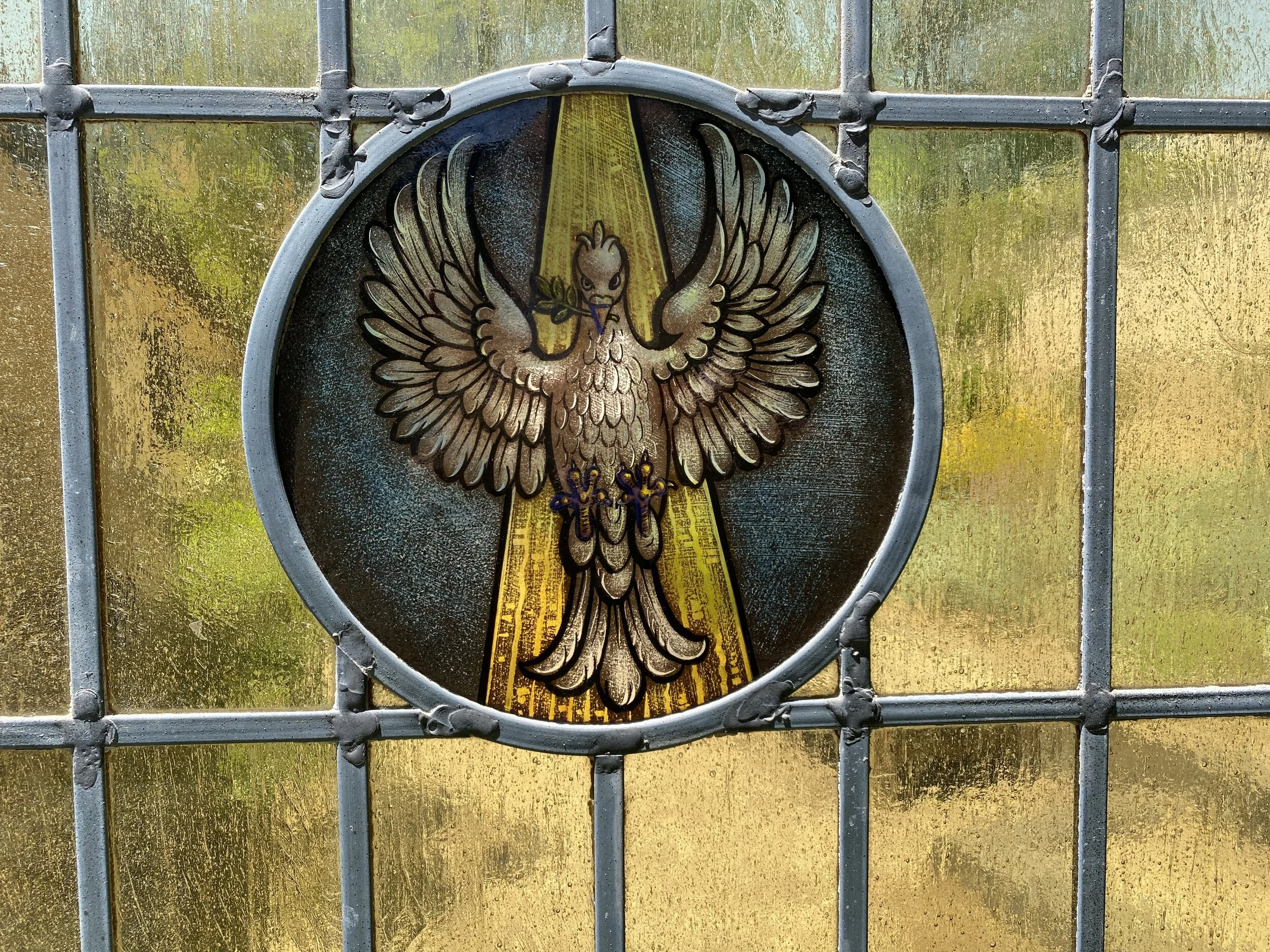When Leanne and I were young—many, many years ago—we lived in St. Petersburg, Florida. It was boom time for churches and the First Presbyterian Church of St. Petersburg was building a new church campus and abandoning the old one.
Everything was for sale, including the stained glass windows. For, I believe it was, ten dollars we bought one of the windows in the chapel and hung it in our house.
Months later, a neighbor—a very pious woman—exclaimed, “Oh, my goodness, you have the Holy Ghost in your dining room.”
We had thought of the window mostly as decorative art, not as an object of veneration. But as the years passed, I came to appreciate what the older woman was saying and why it’s symbolism was important for my theology.
Yes, we had the Holy Ghost in our dining room. Yes, it was important that it be there surrounding our table with God’s Spirit.
Yes, it is important that we understand the invitation the Spirit offers to more deeply understand God, and that is what we practice when we undertake centering prayer. Every Friday at 8 am. Duane Bidwell, Sam Atwood and I enjoy taking turns leading and meeting old and new friends
The sense of togetherness is not much diminished by meeting online. Indeed, there are some participants that I only know from our online gatherings, and I consider them friends.
As we did when we met in person, we meditate following the tradition of Centering Prayer, which was popularized in the United States by Fr. Thomas Keating, a Trappist monk, who worked most of his long life reuniting Christianity with its mystic and contemplative traditions.
In Centering Prayer, we sit in silence to experience God’s presence with us. No one speaks in the background guiding us to relax this muscle or that—although it’s perfectly all right to relax—and no one tries to paint a word picture to focus on. I watched Fr. Keating give instructions about how to do Centering Prayer. It’s a wonderful video of an aged priest patiently telling his followers how to undertake this ancient practice. It’s simple, he said, and he repeated the four steps that we use to introduce our sessions. Choose a sacred word. Close your eyes. Let the word bring you back to your center, and keep the rest of the world at bay.
Finally, in response to a question from the audience, he simply said, “Just sit down.”

